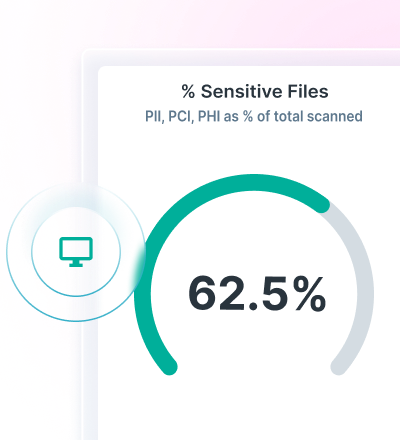Personally Identifiable Information In The Age Of AI: Challenges & Opportunities
0 minutos de leitura
In the era of artificial intelligence, the concept of PII (personally identifiable information) has gained new weight. Modern AI systems can piece together fragments of seemingly harmless data to reconstruct sensitive profiles. An IP address, combined with a timestamp or a "pseudonymised" dataset cross-referenced against open sources, can suddenly become identifiable.
This blurred line between "non-personal" and "personal" information raises urgent questions for regulators, technologists and business leaders alike.
What is PII?
At its simplest, PII refers to any personal information that can directly or indirectly identify an individual. Traditional examples include full names, government-issued numbers, phone numbers and email addresses. But as digital ecosystems have expanded, so has the meaning of PII. Today, the identifiable definition stretches far beyond contact details to include biometric scans, precise geolocation, browsing histories and even behavioural patterns that can be linked back to an individual.
The expanded definition of "identifiable"
Historically, regulators and industries classified PII into two categories:
- Direct identifiers — explicit details such as full name, passport number or tax file number.
- Indirect identifiers — information that, when combined with other data points, could reveal identity (for example: date of birth and postcode together).
This framework worked reasonably well in the past, but AI changed the equation. Modern models can detect patterns, infer missing details and re-identify individuals from information once considered anonymous.
Take biometric data, for example. Fingerprints, iris scans and facial recognition outputs were once niche and siloed, but are now used widely across sectors from healthcare to banking. Or genomic data, increasingly integrated into medical research and consumer wellness platforms, where a single sequence can be enough to identify a person and their relatives. Even behavioural signals such as keystroke patterns or voice tone. They were previously dismissed as too vague, but are now leveraged by AI systems to authenticate identity.
This broadening scope complicates the identifiable definition. What was once safely "non-identifiable" may, in the hands of advanced analytics, cross the threshold into personal information. For enterprises, this means the perimeter of what must be governed as PII data is expanding faster than traditional frameworks anticipated.
Challenges AI poses for PII protection
AI offers unmatched capability in processing and generating insights from data, but with that comes unprecedented risks.
- Data ingestion without boundaries — AI systems train on vast datasets, often compiled from disparate sources. Even when anonymised, these pools can contain residual identifiers or contextual clues that allow re-identification. This raises ethical questions and potential violations on PII across HIPAA, GDPR or Singapore's PDPA.
- Potential leakage through outputs — Generative AI models can inadvertently surface fragments of PII. For instance, a chatbot trained on historical logs may regurgitate an email address or internal customer record when prompted just the right way. Such incidents may be rare, but they undermine user trust when they occur.
- Inference and reconstruction risks — Unlike traditional databases, AI systems don't just store PII data; they can infer it. A model might predict sensitive health conditions, political leanings or financial vulnerability based on patterns. Such "inferred PII" falls into a regulatory grey area, but is equally damaging if exposed.
- Compliance lag — It goes without saying that regulations are struggling to keep pace with AI. Frameworks like HIPAA or PCI DSS were designed for structured systems of record, not adaptive models that continuously learn and generate. This gap leaves organisations navigating uncertainty, with risk of non-compliance in multiple jurisdictions.
The net result is a widening exposure surface. Therefore, enterprises cannot treat PII as a static compliance checkbox. In the AI era, the meaning of PII is dynamic, contextual and constantly being re-shaped by rapidly growing technological capabilities.
Business implications and opportunities in managing PII
The conversation around PII data is often framed through the lens of compliance and risk. While these concerns are paramount, forward-looking enterprises see the governance of personal information as an opportunity to strengthen customer trust and operational resilience.
In an environment where breaches make headlines overnight, being able to demonstrate maturity in protecting PII becomes a differentiator. Customers, partners and regulators are likely to reward organisations that treat privacy not as a legal burden but as a core business value.
Operationally, accurately classifying and protecting PII data also fuels efficiency. Automated discovery tools reduce the guesswork in locating sensitive information across sprawling data lakes and SaaS platforms. Policies can then be enforced at scale: blocking, masking or encrypting sensitive fields depending on context.
For instance, a PII form submitted by a customer can be routed through automated validation, redaction and secure storage pipelines without human intervention. This reduces the risk of accidental exposure and cuts down manual overhead, accelerating business processes without compromising safety.
Emerging best practices
Organisations navigating the AI era converge on several best practices to handle PII responsibly.
- Adopting a privacy-by-design mindset — Data protection controls are embedded into every system and workflow, rather than bolted on after the fact.
- Minimising collection — Rather than storing every possible attribute, companies are revisiting the identifiable definition of PII and restricting themselves to what’s strictly necessary.
- Transparency — Early adopters communicate clearly to customers what PII is collected, how it’s used and when it’s deleted. These practices align not only with Singapore's PDPA, but also with global frameworks.
- Resilience as part of the strategy — Even the most advanced controls can never guarantee zero risk, which is why incident response planning, encryption key rotation and continuous monitoring are critical.
The enterprises that thrive will be those that view PII data governance as a dynamic discipline, adapting controls as AI technologies evolve and regulatory scrutiny intensifies.
Conclusive thoughts on PII in the age of AI
To restate, the PII meaning has grown more complex with the advent of AI. It is no longer sufficient to think of what PII is in static terms. Instead, enterprises must treat PII data as living information that flows across borders, platforms and models. Done poorly, it exposes companies to fines, reputational damage and operational chaos. Done well, it becomes a foundation for trusted digital collaboration.
Industry leaders are already embracing this reality. By pairing strong technical safeguards with cultural and governance shifts, they position themselves to innovate responsibly. This only proves that protecting privacy and leveraging AI are not mutually exclusive, but mutually reinforcing.
Forward-looking enterprises invest not only in secure data flows, but in protecting where data travels. That means applying the same precision to email as we do to file transfers. For enhanced oversight, consider Forcepoint's Data Loss Prevention (DLP) to extend unified policy protection across cloud, endpoint and email environments, with agentless deployment, local sovereignty and 99.99% uptime.
No Artigo
X-Labs
Receba insights, análises e notícias em sua caixa de entrada

Ao Ponto
Cibersegurança
Um podcast que cobre as últimas tendências e tópicos no mundo da cibersegurança
Ouça Agora








